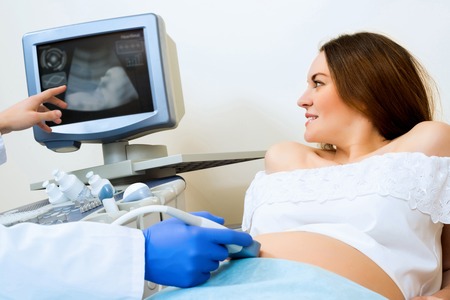What are Braxton Hicks Contractions?
During your pregnancy, the uterus undergoes a number of changes. It is of the size of your fist when you conceive and it expands to accommodate an entire baby. By the end of the pregnancy it becomes paper thin. The uterine muscles are made in a way that they can bear this stress. When you go into labor, the uterine muscles contract and cause the dilatation of the cervix from where the baby comes out. Somewhere between 20-22 weeks of pregnancy, contractions begin in the uterus causing hardening of the pelvic muscles and abdomen. These are not actual labor pains and these practice contractions occurring in the uterus are called as Braxton Hicks Contractions. The pains mimic labor pains so they are also called as false labor.
How do Braxton Contractions Feel?

These contractions cause painless tightening of the uterine muscles and begin from the fundus of the uterus and spread downwards. If you keep your hand over the belly, you will notice the abdominal muscles have hardened and this lasts for about 30 seconds. However in the early weeks, you may not notice Braxton hicks 19 weeks pregnant as the intensity is not very severe. Once you reach closer to your due date, these contractions will get stronger and they will come on more frequently. They generally begin around 20 weeks and are strong and noticeable by the time you are 32 weeks pregnant.
How to Tell the Difference Between Braxton Hicks and Contractions?
Since Braxton Hick contractions are similar to labor pains, it is very important to understand the difference between the two so that you can take a judgment of whether you need to rush to the hospital. Here are some of the finer details of the two types of pains:
Braxton Hicks Symptoms
- The pains are irregular and do not come at frequent intervals
- They come on one to two times an hour or few times a day
- They last for up to 30 seconds
- Their intensity does not increase as the pains progress
- They stop or reduce in intensity if you change your position or activity
Labor pain contractions
- The pains are more intense
- The pains come on at regular intervals and their intensity goes on increasing
- The frequency of the pains also increases
- They last longer
- They do not reduce by change in position
Braxton hicks at 37 weeks: During the last weeks of your pregnancy, Braxton hicks contractions may come on more frequently that is every 10 minutes. This is the stage of pre-labor. The only way to tell whether these pains are true labor pains is by doing an internal examination. Per Vaginal check up will show that the cervix is still firm and not dilated. In case of true labor pains, the cervix begins to soften and dilate. However these false contractions are indicative that things are progressing normally and that labor is around the corner.
How to Ease Braxton Hicks Contractions?
- Drink lots of water. Dehydration is known to bring on contractions. So keep yourself well hydrated
- Movement and change of position and activity relieves these contractions. If you are sitting, try to get up and walk in the hall way or lie down for a while
- A warm bath may help you relax and reduce the intensity of the pain
- Practice breathing techniques which you learn at the antenatal classes.
When to Call Your Doctor?

In the last few weeks, you may notice Braxton hicks becoming more frequent. If the frequency and intensity of the pains is gradually increasing you could be in real labor. You are at a risk of pre-term labor if you experience these symptoms before 37 weeks. The alarming signs when you will need to call your doctor are:
- Low back pain
- Pelvic pressure or feeling of something pushing downwards
- Bloody mucus discharge from the vagina.
- Leaking or sudden gush of clear fluid
After you cross the 37 week mark, you will need to look out for your baby’s movements. If there is a reduction in the number of movements or if your water bag has ruptured, then you will need to rush to the hospital immediately.


